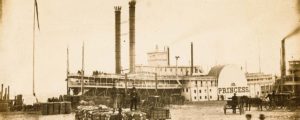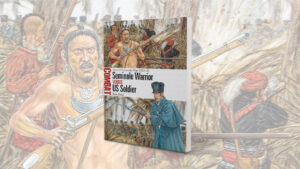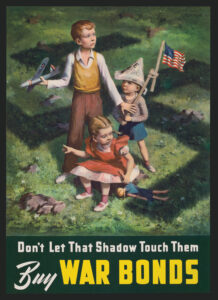If John Sayles were ever to make a movie with a Civil War theme, it would probably look a lot like Pharaoh’s Army, director Robby Henson’s first feature length film that, sadly, went almost directly to DVD after a limited and short-lived theater release. Filming with a shoestring budget on location in his native Kentucky, Henson’s camera gracefully caresses the smoky hills, shady hollows and crystalline creeks of the Cumberland Plateau, isolated hard – scrabble borderlands far from the Civil War’s larger, headline-grabbing killing fields. Nevertheless, this remote region was bitterly contested, often by small Union and Confederate units acting almost autonomously, and the divided loyalties of its citizens made the somber mountains the scene of some of the fiercest bushwhacking and irregular guerrilla fighting outside of Missouri.
While the setting of the film is lush and bucolic, the gritty story line is primal and bitter. Union Army Captain John Abston, played with brilliant understatement by Chris Cooper, leads a ragtag cavalry patrol up a creek into a mist-shrouded valley on what should have been a routine foraging mission. Food and forage for the military units operating in this land of subsistence agriculture were always in short supply, and both sides plundered liberally from allies and enemies alike.
Abston’s patrol stumbles upon the small, remote farm of Sarah Anders, played by Patricia Clarkson, and her son, known only as Boy, played by newcomer Will Lucas. Like thousands of other Southern women, Anders is responsible for keeping the homestead going while her husband is away fighting for the Confederacy. A fiercely proud and defiant woman, she harbors an intensely personal hatred of all Yankees. Anders has just reburied her infant daughter on the farm because a gang of Union sympathizers dug the body out of the community graveyard for being part of a Confederate family.
Mother and son try desperately to hide their few valuable possessions, including a musket, but Abston’s experienced bummers soon appropriate almost everything of value. Abston promises to leave the family its mule to help it subsist, but what should have been a routine stop and snatch raid gets complicated when a trooper takes a nasty fall from the barn’s hayloft right on top of a conveniently placed pitchfork. Forced to treat the trooper’s serious wound, Abston’s men and the Anders family become unwilling cohabitants of the tiny farm.
The characters come to embody all of the tensions, hatreds and mistrust that are fueling the Civil War beyond this isolated Kentucky valley. But Captain John Abston’s morally conflicted personality makes his character more complex and more human than any Northerner Sarah Anders can envision. Himself a farmer, Abston is a steadfast abolitionist but has not yet killed anyone. He has lost his wife several years earlier and is obviously yearning for the warmth and security of his home. Captain Abston easily falls into the agricultural routine of the Anders farm, chopping wood and tilling the fields for his hostess. She treats his blistered hands and even breaks out her best dress, in an apparent effort to please the current man of the house. Grudgingly, Abston and Anders begin to relate to each other as individuals rather than the stereotypes each has been conditioned to mistrust.
The same cannot be said for Abston’s unruly Union troopers, who become increasingly uneasy the longer they remain tied to one place. For them, the Anders farm is no lost Eden; rather, it is a place of potential sudden death from marauding bands of Confederates, men much like themselves but dressed in butternut and gray. The fragile truce is shattered when one of the troopers is killed by a band of local men led to the farm by Boy. Everyone quickly reverts to type; Abston angrily orders everything at the farm confiscated, and as a final insult buries the dead Union soldier on the property next to Sarah Anders’ daughter.
Abston and his troopers ride away followed by Boy, determined to use the hidden musket to kill the Yankees. He succeeds in killing the injured trooper riding in Anders’ wagon. This brings an enraged Abston back to the farm with revenge in his heart. But he cannot bring himself to murder his former hostess or her child. He fires his pistol into the air twice for the benefit of his men and leaves the trooper’s body at the farm with instructions that it should have a Christian burial. In their ultimate act of defiance, Sarah and Boy, who have already dug up the first dead soldier and thrown his body into a stream, now take the second dead Yankee and stuff him head-first into a sinkhole and cover it with dirt.
Henson provides several ironic twists in the movie. A slave belonging to a local preacher, played in a cameo role by Kris Kristofferson, actually kills the first Union soldier Abston orders buried at the farm. So it’s a slave, precisely the person Abston has signed up to save, who becomes the first man Abston kills in the war. While all the Union soldiers except Abston are portrayed as coarse cowards with no moral center, it is Sarah Anders’ spite and anger that ultimately drives her to the amoral act of degrading the bodies of the dead. Even the title of the film, Pharaoh’s Army, carries a heavy dose of symbolism. It is drawn from a spiritual, “Mary Don’t You Weep,” that mentions the drowning of Pharaoh’s army in the Red Sea, a clear reference to the Union army getting sucked into a place where the soldiers flounder into trouble because they don’t belong. Clearly Henson’s message is that war defiles everyone it touches, regardless of their intentions or ideology.
Originally published in the July 2008 issue of America’s Civil War. To subscribe, click here.




